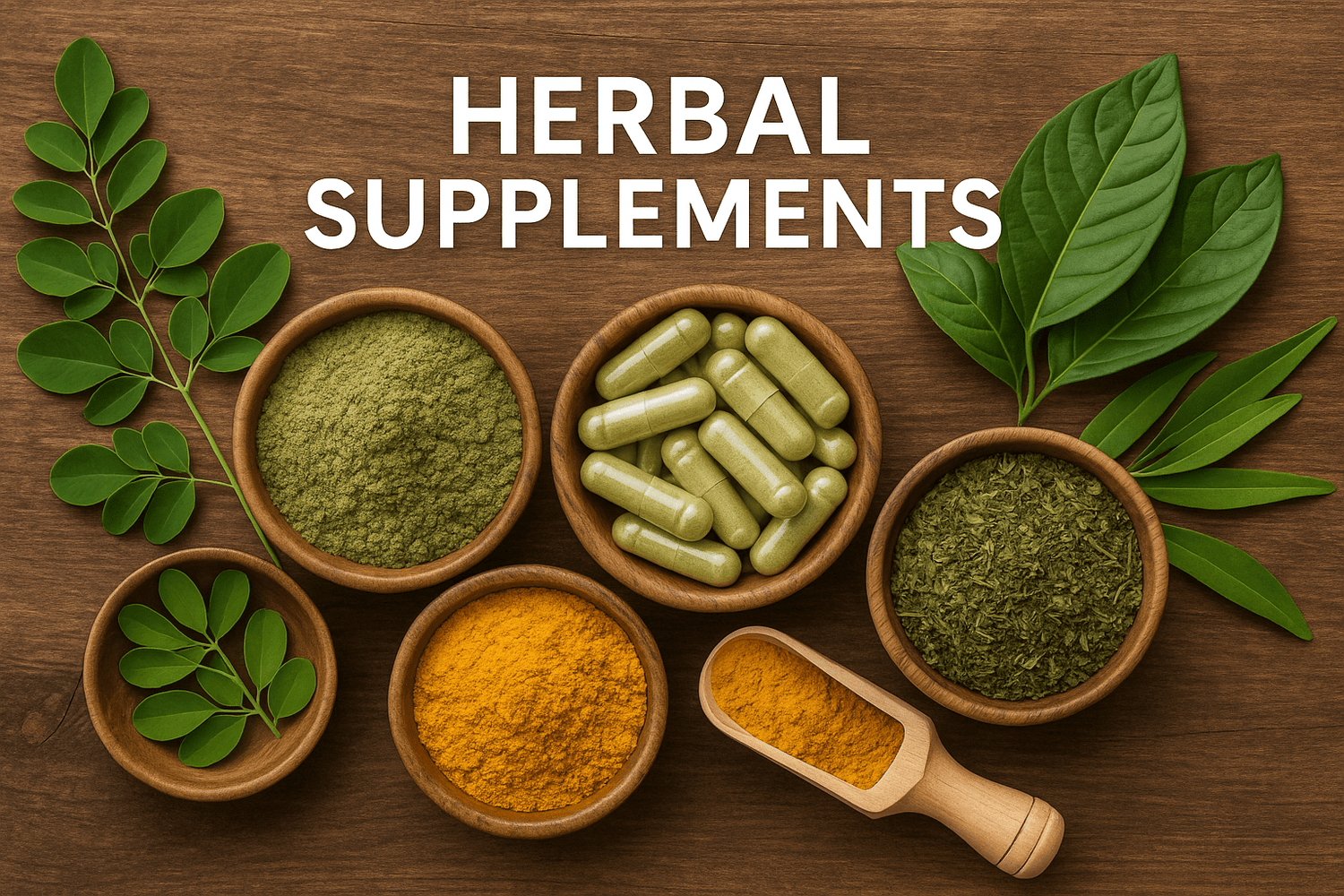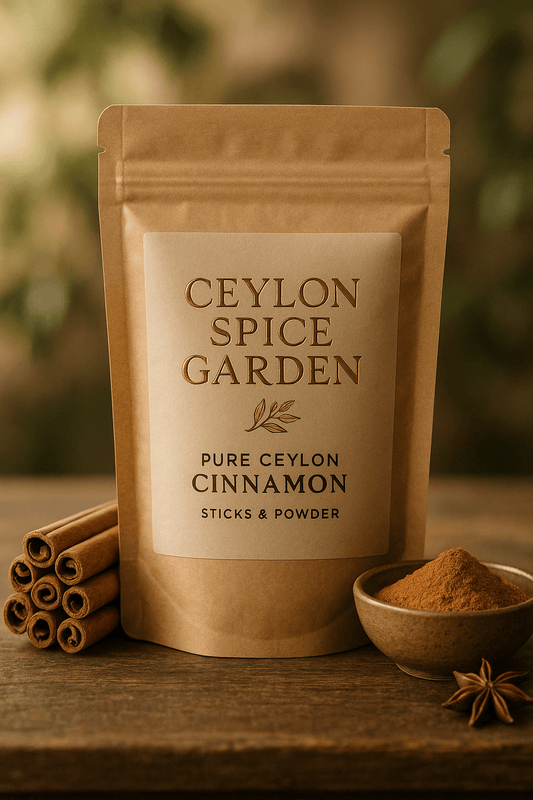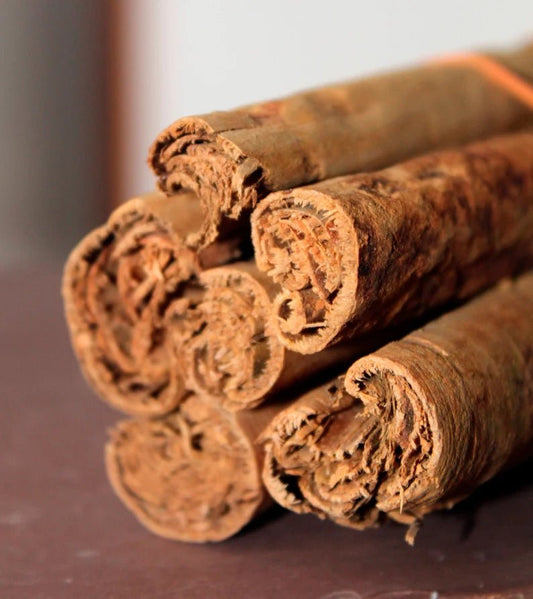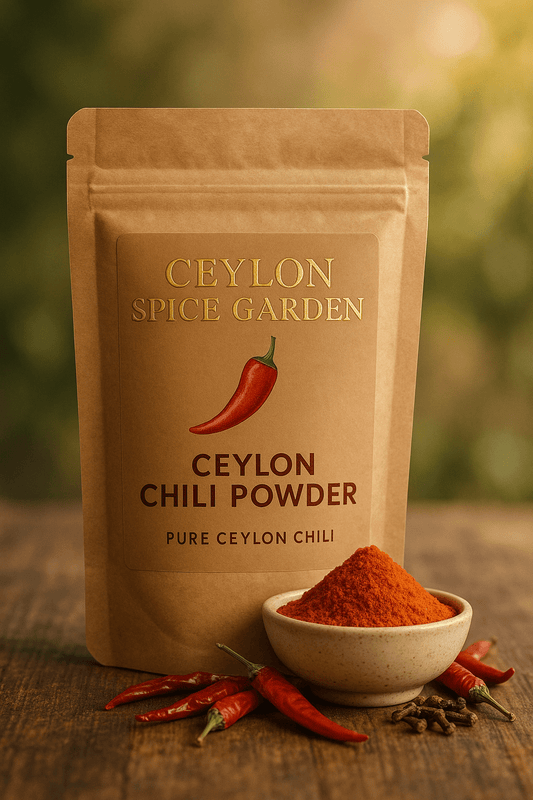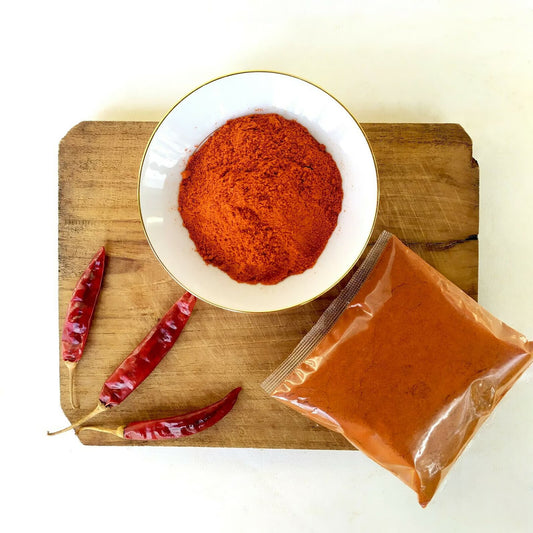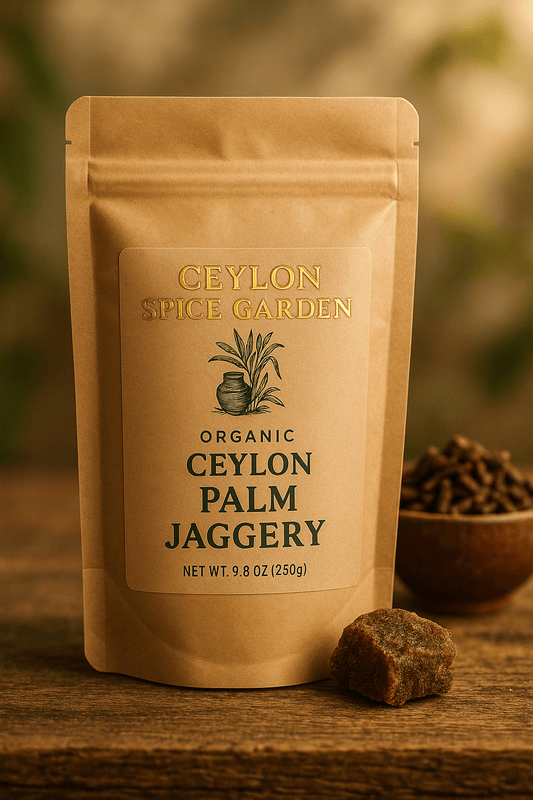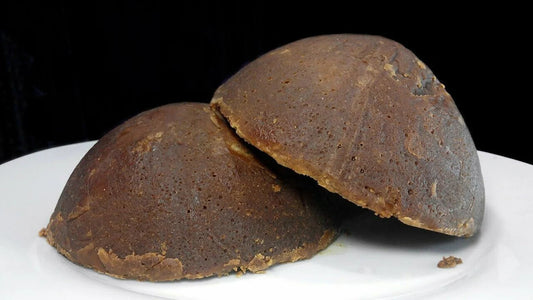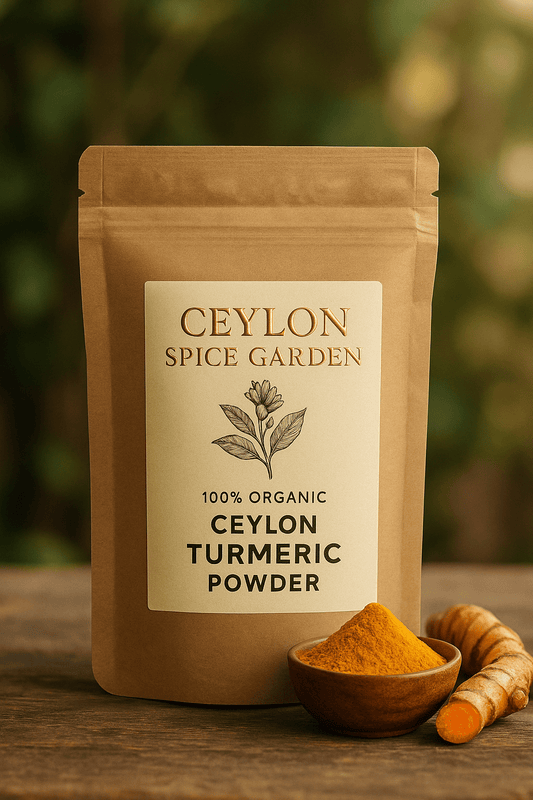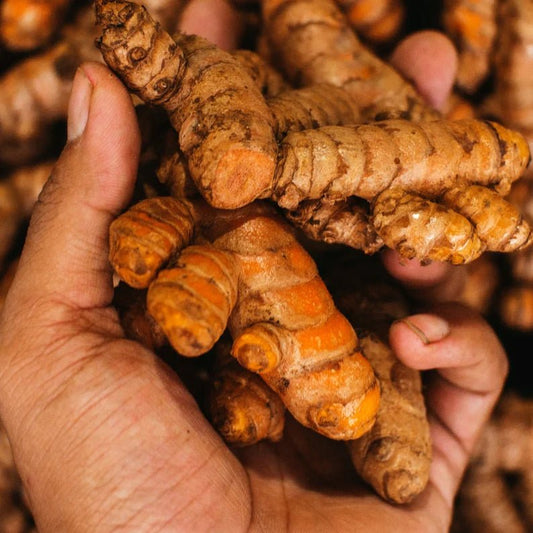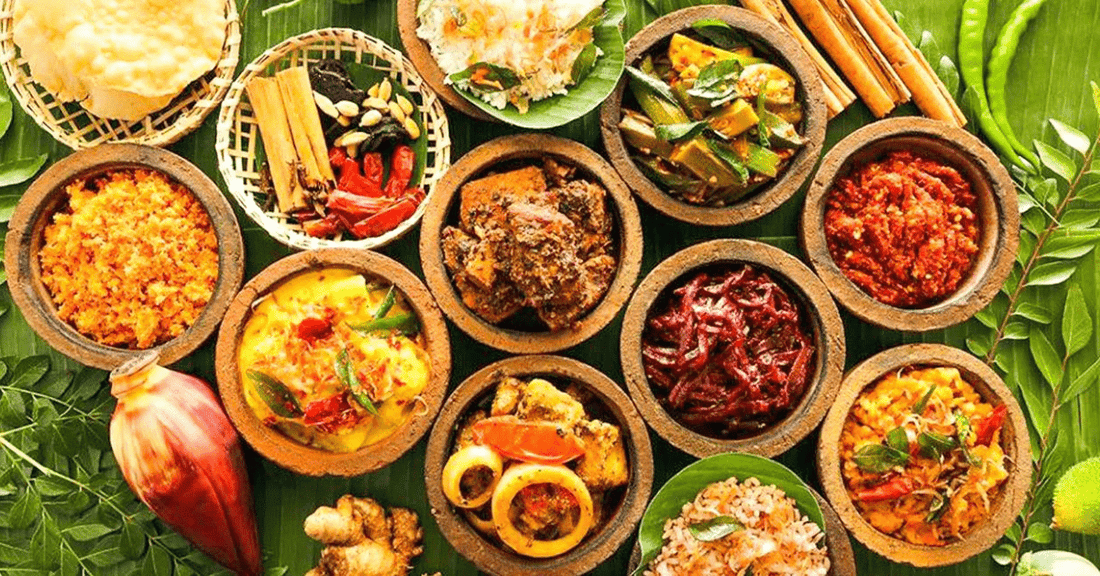
Traditional Sri Lankan Spice Blends and Recipes | Ceylon Spice Garden
Traditional Sri Lankan Spice Blends and Recipes: A Culinary Journey Through Ceylon's Aromatic Heritage
Table of Contents
- The History of Sri Lankan Spice Blends
- Essential Traditional Spice Blends
- Sri Lankan Curry Powder (Thuna Paha)
- Roasted Curry Powder (Badapu Thuna Paha)
- Sri Lankan Garam Masala
- Classic Sri Lankan Recipes
- Traditional Rice and Curry
- Specialty Dishes Using Spice Blends
- Traditional Cooking Techniques
- Health Benefits of Sri Lankan Spice Blends
- Frequently Asked Questions
The History of Sri Lankan Spice Blends
Traditional Sri Lankan spice blends and recipes have evolved over more than 2,000 years, influenced by indigenous Sinhalese and Tamil traditions, as well as waves of traders and colonizers who left their culinary mark on the island. These spice combinations aren't merely flavor enhancers – they represent a sophisticated understanding of how different spices complement each other while providing medicinal benefits.
The art of blending spices in Sri Lanka goes beyond simple mixing. Each family traditionally had their own closely guarded ratios, passed down through generations. These blends were created not just for taste but also according to Ayurvedic principles, balancing heating and cooling properties to promote health and wellbeing.
The Cultural Significance of Spice Blending
In Sri Lankan culture, the preparation of spice blends is often a communal activity. Families gather to roast, grind, and mix spices, sharing stories and culinary wisdom. This tradition ensures that authentic flavors and techniques are preserved while strengthening family bonds.
Essential Traditional Spice Blends
Understanding traditional Sri Lankan spice blends and recipes begins with mastering the fundamental mixtures that form the backbone of the cuisine. Each blend has specific uses and brings its own character to dishes.
| Spice Blend | Primary Use | Key Characteristics | Main Ingredients |
|---|---|---|---|
| Raw Curry Powder | Vegetable curries, marinades | Bright, fresh, aromatic | Coriander, cumin, fennel, fenugreek |
| Roasted Curry Powder | Meat curries, rich gravies | Deep, complex, robust | Roasted spices, black pepper, cinnamon |
| Jaffna Curry Powder | Northern Sri Lankan dishes | Spicy, bold, aromatic | Chili, black pepper, cumin, fennel |
| Maldive Fish Mixture | Sambols, vegetable dishes | Umami-rich, savory | Maldive fish, chili, onions |
| Sweet Spice Mix | Desserts, sweet breads | Warm, sweet, fragrant | Cardamom, nutmeg, cloves |
Ayurvedic Wisdom: Traditional spice combinations balance heating and cooling properties. For example, cooling coriander balances heating black pepper, while digestive spices like cumin and ginger are added to heavy dishes to aid digestion.
The Living Tradition of Sri Lankan Spice Blends
Traditional Sri Lankan spice blends and recipes represent more than culinary techniques – they embody centuries of cultural exchange, medicinal wisdom, and family traditions. From the simplest vegetable curry to elaborate feast dishes, these spice combinations create the distinctive flavors that make Sri Lankan cuisine unique. By understanding these traditional blends and mastering their use, we keep alive a culinary heritage that connects us to generations of Sri Lankan cooks who knew that the secret to exceptional food lies in the perfect balance of Ceylon's legendary spices.
Frequently Asked Questions
Sri Lankan curry powder differs significantly from Indian versions in both composition and preparation. Sri Lankan blends typically have a higher proportion of coriander seeds, giving them a sweeter, more aromatic profile. They often include rice (which adds nuttiness when roasted) and curry leaves, which are less common in Indian blends. The roasting technique is also distinct – Sri Lankan cooks often dark-roast their spices for deeper flavors. Additionally, Sri Lankan curry powders are usually made fresh in smaller batches and used within weeks, while commercial Indian curry powders are often made for longer shelf life.
While you can use regular cinnamon (cassia) as a substitute, it will significantly change the flavor profile of traditional Sri Lankan dishes. Ceylon cinnamon has a sweeter, more delicate flavor with citrus notes, while cassia is stronger and more pungent with a slight bitterness. Ceylon cinnamon also has lower coumarin levels, making it safer for regular consumption. In traditional Sri Lankan spice blends and recipes, the subtle sweetness of Ceylon cinnamon is essential for achieving authentic flavors, particularly in delicate dishes and desserts.
Homemade Sri Lankan spice blends are best used within 3 months for optimal flavor, though they remain safe to use for up to 6 months when stored properly. Whole spices retain their potency longer than ground ones – whole spices can last 1-2 years, while ground spices begin losing their essential oils immediately after grinding. Store blends in airtight containers away from light, heat, and moisture. Traditional Sri Lankan cooks often prepare small batches weekly or bi-weekly to ensure maximum freshness and potency.
Raw curry powder uses unroasted spices and has a brighter, fresher flavor profile ideal for vegetable curries, marinades, and lighter dishes. The spices retain their original color and more volatile aromatic compounds. Roasted curry powder involves dry-roasting each spice before grinding, developing deeper, nuttier, more complex flavors with slight caramelization. It's preferred for meat curries, rich gravies, and dishes requiring bold flavors. The roasting process also makes the spices easier to digest and enhances their warming properties according to Ayurvedic principles.
To begin cooking authentic Sri Lankan dishes, you'll need: Ceylon cinnamon sticks, black peppercorns, coriander seeds, cumin seeds, fennel seeds, fenugreek seeds, mustard seeds, dried red chilies, curry leaves, turmeric powder, and chili powder. With these basics, you can make both raw and roasted curry powders and prepare most traditional dishes. Additional spices like cardamom, cloves, and nutmeg enhance special occasion dishes. Fresh ingredients like garlic, ginger, lemongrass, and pandan leaves are also crucial for authentic flavors.
Proper tempering (thalana) is crucial in Sri Lankan cooking. Heat oil until it shimmers but doesn't smoke – coconut oil is traditional but vegetable oil works too. Add whole spices in order of cooking time needed: first mustard seeds (they should splutter within seconds), then curry leaves and dried chilies (they should sizzle and become crispy), finally sliced onions or garlic. The entire process takes 1-2 minutes. Pour the hot tempered oil immediately over the finished dish. The oil should be fragrant but not burnt – if spices turn black, the temperature was too high.
Start Your Sri Lankan Culinary Journey: Visit Ceylon Spice Garden for authentic spices to create these traditional blends. Browse our complete collection or learn about our commitment to providing the finest Ceylon spices for your kitchen.
Create Authentic Blends: Find premium Ceylon spices for your traditional recipes at Ceylon Spice Garden. Our spices are perfect for creating these time-honored blends.
Sri Lankan Curry Powder (Thuna Paha)
The cornerstone of traditional Sri Lankan spice blends and recipes is the versatile curry powder, known locally as "thuna paha." Unlike commercial curry powders found in Western markets, authentic Sri Lankan curry powder is a complex blend that varies by region and family tradition.
Traditional Raw Curry Powder Recipe
Ingredients:
- 50g coriander seeds
- 25g cumin seeds
- 15g fennel seeds
- 10g black peppercorns
- 5g fenugreek seeds
- 3-4 dried red chilies
- 5g mustard seeds
- 2 sprigs curry leaves (dried)
- Small piece of cinnamon stick
- 3-4 cloves
- 2 cardamom pods
Method:
- Clean all spices, removing any stones or debris
- If using fresh curry leaves, dry them in shade for 2-3 days
- Grind each spice separately to ensure even texture
- Sieve each ground spice through a fine mesh
- Combine all ground spices in correct proportions
- Mix thoroughly and store in an airtight container
- Use within 3 months for best flavor
Pro Tip: For maximum freshness and potency, grind spices in small batches. The volatile oils that provide flavor and aroma begin to dissipate once spices are ground, so fresh grinding ensures the most vibrant taste in your dishes.
Roasted Curry Powder (Badapu Thuna Paha)
Roasted curry powder represents a more complex preparation in traditional Sri Lankan spice blends and recipes. The roasting process transforms the flavors, creating deeper, nuttier notes that stand up well to meat dishes and rich coconut gravies.
Traditional Roasted Curry Powder Recipe
Ingredients:
- 60g coriander seeds
- 30g cumin seeds
- 20g fennel seeds
- 15g black peppercorns
- 10g white rice (uncooked)
- 8-10 dried red chilies
- 5g fenugreek seeds
- 1 tsp mustard seeds
- 5cm cinnamon stick
- 4-5 cloves
- 3 cardamom pods
- 10-12 curry leaves
Roasting Method:
- Heat a dry pan over medium-low heat
- Roast rice until golden brown, set aside
- Roast each spice separately until aromatic and slightly darkened
- Coriander seeds: 3-4 minutes until fragrant
- Cumin and fennel: 2-3 minutes until slightly brown
- Fenugreek: 1-2 minutes (careful not to burn)
- Chilies and curry leaves: 30 seconds until crispy
- Cool all roasted spices completely
- Grind together to a fine powder
- Store in an airtight container away from light
Sri Lankan Garam Masala
While garam masala is often associated with North Indian cuisine, Sri Lankan versions of this warming spice blend have their own distinct character, incorporating local Ceylon cinnamon and emphasizing different proportions that reflect island tastes.
Sri Lankan Garam Masala Blend
Ingredients: 2 tbsp Ceylon cinnamon pieces, 1 tbsp green cardamom pods, 2 tsp cloves, 1 tsp black peppercorns, 2 bay leaves, 1/2 tsp nutmeg (grated)
Method: Dry roast all ingredients except nutmeg until fragrant. Cool completely, then grind with nutmeg to a fine powder. This blend is perfect for biryanis, meat curries, and special occasion dishes.
Classic Sri Lankan Recipes
Traditional Sri Lankan spice blends and recipes come together in the island's beloved dishes. These recipes showcase how skillful spice blending creates complex, layered flavors that define Sri Lankan cuisine.
Kukul Mas Curry (Chicken Curry)
Traditional Chicken Curry
Ingredients:
- 1 kg chicken, cut into pieces
- 3 tbsp roasted curry powder
- 1 tsp chili powder
- 1/2 tsp turmeric powder
- 2 stalks lemongrass, bruised
- 1 sprig curry leaves
- 4 cloves garlic, sliced
- 2 inch ginger, sliced
- 2 onions, sliced
- 2 green chilies, slit
- 400ml coconut milk
- 2 tbsp coconut oil
- Salt to taste
- 1 tsp tamarind paste
- Pandan leaf (optional)
Method:
- Marinate chicken with curry powder, chili powder, turmeric, and salt for 30 minutes
- Heat coconut oil in a heavy-bottomed pan
- Sauté onions, garlic, and ginger until golden
- Add curry leaves, lemongrass, and green chilies
- Add marinated chicken and brown on all sides
- Pour in thin coconut milk and simmer for 20 minutes
- Add thick coconut milk and tamarind paste
- Simmer until chicken is tender and gravy thickens
- Adjust seasoning and serve hot with rice
Get Authentic Ingredients: Shop our premium spice collection for the freshest curry powders and individual spices to create these traditional recipes.
Traditional Rice and Curry
No discussion of traditional Sri Lankan spice blends and recipes is complete without rice and curry – the heart of Sri Lankan cuisine. This isn't a single dish but rather a collection of curries, sambols, and accompaniments served together.
Components of a Traditional Rice and Curry Meal
Essential Elements
- Rice: Usually red or white rice, sometimes coconut milk rice for special occasions
- Protein Curry: Fish, chicken, beef, or egg curry using roasted curry powder
- Dhal Curry: Lentils tempered with mustard seeds and curry leaves
- Vegetable Curries: 2-3 varieties using raw curry powder
- Mallung: Shredded greens with coconut
- Sambol: Fresh coconut relish or onion sambol
- Papadum: Crispy lentil wafers
- Pickle: Usually lime or mango
Parippu (Dhal Curry)
Traditional Red Lentil Curry
Ingredients:
- 250g red lentils (masoor dhal)
- 2 cups water
- 1 tsp turmeric powder
- 2 cloves garlic, crushed
- 1 small onion, sliced
- 2 green chilies, slit
- 200ml coconut milk
- 1 sprig curry leaves
- Salt to taste
For Tempering:
- 2 tbsp coconut oil
- 1 tsp mustard seeds
- 1 dried red chili, broken
- 1 small onion, sliced thin
- Few curry leaves
Method:
- Wash lentils and boil with water, turmeric, garlic, and green chilies
- Cook until lentils break down and become creamy
- Add coconut milk and salt, simmer for 5 minutes
- Heat oil for tempering in a small pan
- Add mustard seeds and wait for them to splutter
- Add dried chili, curry leaves, and onion
- Fry until onion is golden brown
- Pour tempering over the dhal curry
- Mix gently and serve hot
Specialty Dishes Using Spice Blends
Traditional Sri Lankan spice blends and recipes extend beyond everyday curries to special occasion dishes that showcase the sophistication of the island's culinary heritage.
Lamprais
This Dutch Burgher dish exemplifies the multicultural influences in Sri Lankan cuisine. It consists of rice cooked in meat stock, accompanied by various curries, all wrapped in banana leaf and baked.
Lamprais Spice Mix: Combines Ceylon cinnamon, cardamom, cloves, and nutmeg with curry powder for a unique flavor profile that bridges Eastern and Western culinary traditions.
Kottu Roti
Street-Style Kottu Roti
This popular street food demonstrates how traditional spice blends adapt to modern dishes. The rhythmic chopping sound of kottu preparation is iconic in Sri Lankan food culture.
Spice Mix for Kottu:
- 2 tsp roasted curry powder
- 1 tsp chili flakes
- 1/2 tsp black pepper powder
- 1/2 tsp garlic powder
- Salt to taste
Traditional Cooking Techniques
Mastering traditional Sri Lankan spice blends and recipes requires understanding specific cooking techniques that maximize flavor development.
Tempering (Tadka)
This technique, known locally as "thalana," involves heating oil and adding whole spices to release their essential oils. The aromatic oil is then poured over finished dishes, adding a final layer of flavor.
Common Tempering Combinations
- For Dhal: Mustard seeds, curry leaves, dried chili, onions
- For Vegetables: Cumin seeds, curry leaves, garlic
- For Meat: Cinnamon, cardamom, cloves, bay leaves
Coconut Milk Techniques
Sri Lankan cooking distinguishes between first (thick) and second (thin) coconut milk extractions, using them at different stages of cooking for optimal results.
Health Benefits of Sri Lankan Spice Blends
Traditional Sri Lankan spice blends and recipes were developed with Ayurvedic principles in mind, creating combinations that not only taste exceptional but also promote health and wellness.
| Spice | Traditional Use | Health Benefits | Ayurvedic Properties |
|---|---|---|---|
| Ceylon Cinnamon | Sweet and savory dishes | Blood sugar regulation, anti-inflammatory | Warming, improves circulation |
| Black Pepper | All curry powders | Enhances nutrient absorption, digestive aid | Hot, stimulates agni (digestive fire) |
| Turmeric | Base for all curries | Anti-inflammatory, antioxidant | Heating, purifies blood |
| Coriander | Primary curry powder ingredient | Cooling, aids digestion | Balances all doshas |
| Cumin | Curry powders, tempering | Improves digestion, iron-rich | Warming, reduces gas |
| Fenugreek | Small amounts in blends | Helps control blood sugar | Warming, strengthens digestion |
